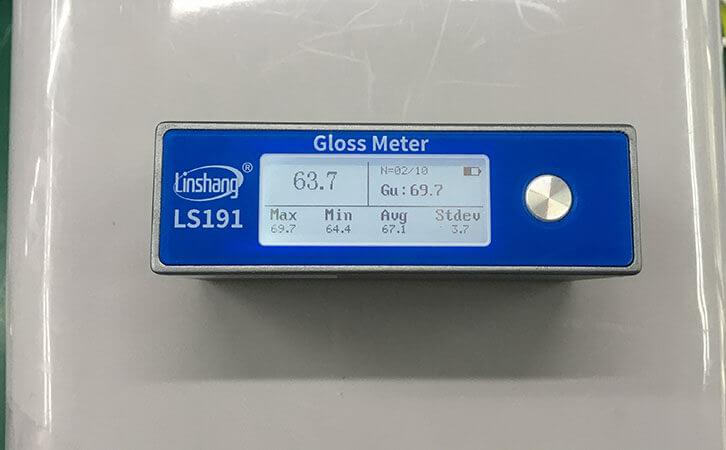How to Measure Plastic Gloss with Gloss Checker?
Plastic is a kind of synthetic resin. Its shape is similar to that of pine resin in natural resin. It is synthesized through various methods of artificial chemistry. We also need to measure the gloss of plastics. The procedure for measuring the gloss with the LS191 gloss checker is as follows:
Prepare tools and materials: a piece of white plastic, a single-angle gloss checker LS191.
1. Specific operation methods and measurement steps:
First prepare a piece of white plastic. The measurement result of white clean plastic is more accurate. If it is dirty, the test result will be affected. The gloss checker LS191 is turned on and the self-calibration will last 10 seconds after turning on.
Measure and then press the "Power" button to save the current measurement result. The gloss checker LS191 will automatically count the maximum, minimum, average and standard deviation values. The smaller the standard deviation values, the lighter the material. If the difference between the two measurements of the mean square error value is 1.6 GU, it indicates that the gloss of the plastic is better.
2. The matters needing attention during the measurement process:
Clear the previous data and you can press the power button to clear.
The gloss checker and the measurement sample should be kept clean before storage and use.
During the cleaning process, a professional cleaning cloth should be used.
The gloss checker (also called gloss meter) used in the measurement of plastic gloss is an instrument for measuring the specular reflection (gloss) of the surface. Gloss measurement is to determine the gloss by measuring the amount of reflected light by irradiating light onto the object surface at a fixed intensity and angle. There are many different geometries that can be used for gloss measurement, but the measurement also depends on the measured material surface. For non-metallic materials such as coatings and plastics, the amount of reflected light can increase as the angle of light increases,
During the process of light irradiation, some light will be absorbed into the surface material or diffusely scattered by the surface because some of the light passing through the surface of the material. The reflectivity of metal is higher, so the angle of reflection generally changes with the angle of illumination. The international technical indicators can define the use methods and specifications of different types of glossmeters, including paint, ceramics and paper. Many industries use gloss checkers to measure the gloss of products during the implementation process to ensure the gloss uniformity in the manufacturing process. The automotive industry is an important customer for glossmeters, and its applications extend from the factory floor to the repair floor.

Secondly, the gloss checker is also widely used in the plastic industry. How to use the gloss checker and how to properly choose the gloss checker play a vital role in the production and processing of the product. At the same time, understand the principle of the gloss checker. It also plays an important role in measuring the gloss of the product and the correct use of the gloss checker. If you are still at a loss when choosing a gloss checker, don't worry. We recommend you Linshang LS191 plastic gloss checker, which is an instrument that can test the gloss of plastic surface. The instrument adopts the national standard 60 degree angle and has a real-time temperature compensation function. This instrument is very easy to use and many professionals in the industry are vying to recommend it.